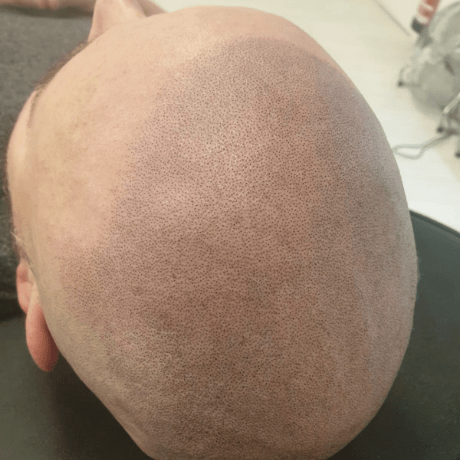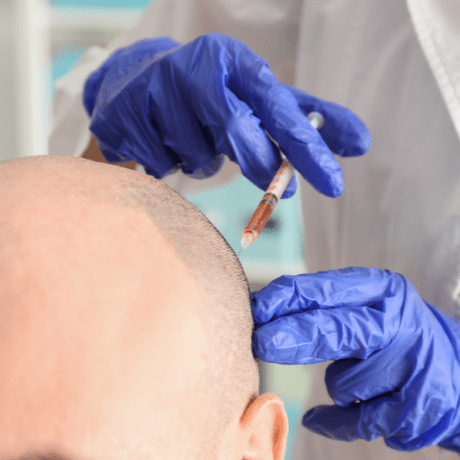When will there be a cure for hair loss?
For as long as we can remember, people have searched for a cure for hair loss. There are plenty of products making big promises and bold statements – but none work. So will there be a cure for hair loss soon? We look a little closer at how far away we might be.
What kind of hair loss research is there?
It seems like every other week there is a news story telling us that a cure for baldness could be on the way. From hair transplants to creams and tablets, scientists around the world are hard at work trying to offer a solution.
Whether it’s genetic, hormonal, or age-related, a large proportion of men suffer from male pattern baldness. So when these news stories appear, it’s hard not to get your hopes up.
But how likely is it that there will be a cure for hair loss in the near future? Below are some of the potential cures currently under research.
- KROX20 protein, SCF gene: Researchers at the University of Texas identified this protein as actively ‘switching on’ skin cells. It delivers the signal to start growing hair. The SCF (Stem Cell Factor) develops hair colour, is also produced by this protein.
- Male pattern baldness genetics: Researchers at the University of Edinburgh identified 287 genetic signals linked to hair loss. From this, they produced a predictive algorithm that could enable the early detection of male pattern baldness.
- Faulty immune cells: Researchers at the University of California-San Francisco have identified an immune cell called Tregs. The cell plays a key role in the hair loss process.
- Stem cells: Using stem cells, Sanford-Burnham Medical Institute researchers have developed a technique to create new hair. This could potentially offer a realistic cure, although only a small amount of evidence and testing has occurred so far.
Will there be a cure for hair loss soon?
The small selection of research results above suggests that a cure for hair loss is only a short time away.
However, the reality is that the vast majority of research is still at a very early stage. This means there is a long way to go before they have a breakthrough. Even if they find a cure, there will have to be years of testing to ensure it is safe for use by the general public.
But in the meantime, what hair loss solutions are available?
- Scalp micropigmentation: We believe this to be the best solution by far. It is a non-surgical treatment that is affordable and long-lasting. Whether it’s for a full scalp area, or to increase density, scalp micropigmentation will transform how you look and feel about yourself.
- Oral Finasteride: These tablets block enzyme 5-alpha reductase activity and block Dihydrotestosterone (DHT) production. You may be able to grow stronger hair as a result. One of the drug’s main side effects is erectile dysfunction.
- Topical Minoxidil: Branded as Rogaine, this can be purchased as a spray, liquid, or foam and then applied to the scalp. The idea is to increase the blood flow to your hair follicles. Damaged follicles are supposed to receive more oxygen to support regrowth. Low libido and erectile dysfunction are some of their side effects.
Conclusion
Science continues to achieve great things and benefits our world in all manner of ways. And when it comes to hair loss, researchers will continue to work tirelessly looking for an answer.
But we are still quite far away from scientists discovering a cure for hair loss. The side effects caused by drugs are also not appealing and hair transplants do not work. It’s why we encourage you to find out more about scalp micropigmentation to discover how it can change your life.



